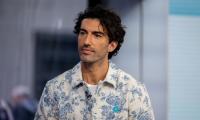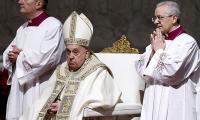Well begun is half done, they say. The year 2020 has started well for some. If we thought 2019 entrenched control from behind the curtain, the beginning of 2020 has already brought along extension in tenures through statute and a declaration that a special court established back in 2014 (that continued the trial of General Musharraf while functioning under the watchful eye of the Supreme Court) was illegal after all. Let’s see what the rest of this year has in store for democracy and rule of law and fundamental freedoms for the ordinary folk.
Shuja Nawaz, the author of ‘Crossed Swords: Pakistan, its Army and the Wars Within’ and the younger brother of General Asif Nawaz (a well-regarded no-nonsense COAS who died on the job) has produced a first-class account of US-Pakistan relations based on primary research: ‘The Battle for Pakistan: The Bitter US Friendship and a Tough Neighbourhood’. He makes the army look good for the most part, providing a detailed account of Pakistan’s engagement with the US and the war on terror. But he is no propagandist. He says it how a sympathetic but candid bystander would see things when it comes to domestic politics.
Shuja Nawaz says his book launches in Pakistan have had to been cancelled. What is the message we are being given if speech that is 95 percent favourable and about five percent critical has to be censored in full? He writes: “The military… pays ritualistic obeisance to the concept of civilian supremacy... but actual decision making on defense matters tends still to be largely in the hands of men in uniform...”
“The prospects of governmental instability emerging from the 2018 elections makes the role of the army even more powerful, given the general perception .... If the new government falters or fails, there is the perennial specter of the much-discussed soft coup of the military being followed by a hard coup to establish an ‘Egypt of the Indus’.” Is there a big secret being divulged here?
There are two main theories on military control of the state. One, that the military is an overgrown institution whose institutional interests don’t leave much room for the healthy growth of other institutions. Two, that the incompetence and dishonesty of politicos prevents civilian ascendency and creates a vacuum that the military inadvertently fills. Proponents of civilian control of the military usually subscribe to the first theory. However, there are periods in our history that make the second seem equally plausible, like some recent developments.
The PML-N’s slogan ‘vote ko izzat do’ was in a nutshell a call to struggle for democracy, rule of law and civilian control of the military. The Supreme Court’s decision in the matter of the army chief’s extension created a situation where parliament became relevant for the first time post-Election 2018. Beyond whether the chief ought to be granted an extension or not, here was a unique opportunity for politicos to put their heads together to determine how elected governments are to command the military and raise and maintain it, as the constitution mandates.
Parliament sensed the opportunity, but one to establish which political party is more loyal than the king. The PML-N leadership communicated to its ranks from London, even before the draft extension law could be put together, that it would unconditionally support the extension. This vote of confidence and support was by a party that has been crying foul over Election 2018 for usurpation of its mandate by selectors who allegedly managed Nawaz Sharif’s ouster and then bled the PML-N through a thousand cuts. May God be praised.
The sum total of formal consultation on this vital legislation was a meeting of a committee comprising representatives of the PML-N, the PPP and two ministers. A minister asked if the parties were going to support the extension. They said they would but would like to propose amendments to improve the law. One minister patiently read the amendments. And then the PML-N and PPP were politely told that the draft bill had to be passed without any addition or deletion. Everyone obliged.
Faisal Vawda showed up with a boot at Kashif Abbasi’s show and all hell broke loose. He is insulting our most solemn institution, said many in a frothing state. With his theatrics, Vawda managed to offend almost everyone. But for once there was merit in what he meant, which was that the PTI has all along been unabashedly sycophantic. It was the PML-N and PPP who claimed to be espousing a higher cause of swearing allegiance to principles and not men. And here when they had an opportunity to take a position, they were falling over themselves to court power.
The PML-N and the PPP are cut up because they have been shown the mirror and their hypocrisy is being exposed. The thoughtful few in the PTI are unhappy because grovelling before the citadel of power is one thing and public admission of it or wearing it as a badge of honour is another. The citadel of power is miffed because the whole point of controlling power from behind the curtain is to not be in everyone’s face while doing so, which becomes impossible to manage when well-meaning clowns wish to reach out in public to kiss the ring.
The only party really pleased with Vawda is the press. Whether it is Pemra’s illegal action of suspending Kashif’s show for 60 days or Imran Khan banishing Vawda from TV screens for a few days or the spectacle of a boot being placed in full public view, there is no way to speak about any of it without speaking about the boot and what it symbolizes. A press ordained not to talk about anything meaningful has found a God-sent opportunity to talk about the Emperor’s boot, even if by castigating, tongue-in-cheek, the host of the bringing out party.
We will keep flogging Vawda but won’t speak of Col Inam-ur-Raheem Advocate. A pleasant and harmless former JAG member and currently a practising lawyer representing servicemen aggrieved by actions of military authorities and also missing persons went missing in December and is now in detention charged with breach of the Official Secrets Act. The power-wielders whose actions he highlighted could surely regard the poor old Col as a source of annoyance. But have the powers-that-be lost their ability to distinguish between a nuisance and a threat?
All states exercise power in some instances in a manner that doesn’t level with black letter law. This gap between law and its enforcement is understandable. But the parts of the state that exercise such power are largely invisible. In our case, the gap between law and its enforcement is in our face. And the parts of the state that exercise power in a manner that doesn’t conform to law don’t do so discreetly. So the yawning gap between law and its enforcement isn’t something that can just be brushed under the carpet, as it remains on display in full public view.
And herein lies the problem with the experiment we are running. When you separate power and responsibility and allocate them to different parts of the state, neither the part with power nor that with responsibility can be held to account. Further, to wield power from behind the curtain effectively, you need folks to know who the power-wielder is, so that the power to persuade doesn’t require its physical use. But once folks know, they begin to talk about the power-wielder in due course – which then defeats the idea of control from behind the curtain.
It’s a vicious cycle and we’ve come full circle a few times. But to our credit, we keep trying to achieve the impossible.
The writer is a lawyer based in Islamabad.
Email: sattar@post.harvard.edu
Postman argues that “typographic mind” was yielding to “televisual mind”
Pakistan is well poised to meet opportunities that Artificial Intelligence will offer for developments in industries
Smog isn’t merely 'environmental' issue anymore, it is public health emergency, socioeconomic burden
As it evolves into Next Generation Air Force, PAF draws strength from its rich history and lessons learned from past...
Local govts of Punjab and WASAs as service delivery agencies are responsible for planning, providing services
Survey conducted in prisons highlights distinct patterns of crime shaped by socio-economic and demographic factors







